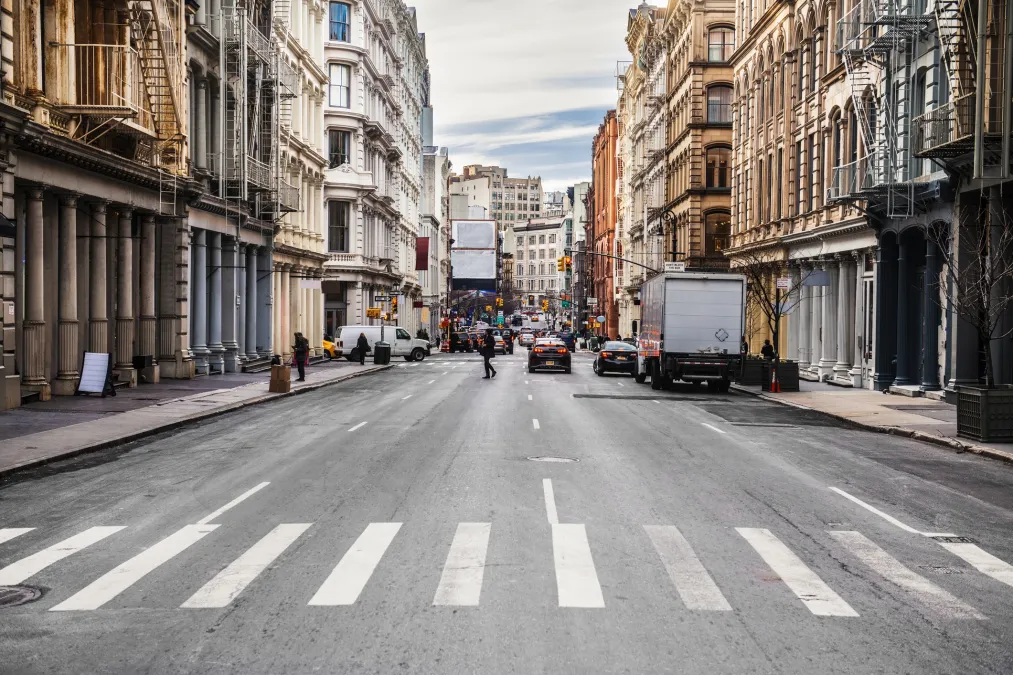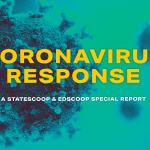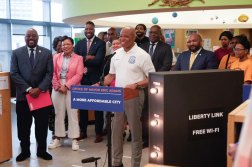New York City launches portal to crowdsource COVID-19 information

New York City’s Department of Information Technology and Telecommunications this week launched a new website aimed at getting residents to contribute to the city’s response to the novel coronavirus pandemic by self-reporting symptoms or encounters with people who may have been diagnosed with the COVID-19 illness.
The “NYC COVID-19 Engagement Portal” is designed to help the city — which is the epicenter of the U.S. outbreak — get a better picture of where potential COVID-19 patients or people in self-quarantine are, and facilitate the city government’s communications with those populations, said Jessica Tisch, New York City’s chief information officer and DoITT’s commissioner.
“The whole purpose is to unlock the power of everyday New Yorkers to create a data set that will give the City of New York information designed to help direct city resources where they’re needed,” Tisch said in a phone interview Tuesday. “We have great data on testing, who shows up to the hospital, but much more limited visibility who’s at home suffering symptoms, staying home and riding it out.”
New York City has recorded 37,453 positive cases of COVID-19 with 914 fatalities, according to the New York State Department of Health, resulting in images of hospitals overrun with dying patients and the establishment of field hospitals in locations like the Jacob K. Javits Convention Center. But Tisch said the new portal could improve the city’s view of where coronavirus infections are spreading and help to get information to people in those areas.
“There is no current data set for who is experiencing symptoms, who is home, convalescing,” she said. “There would be no way for the city to get a data set like that. I hate to use the word crowd-sourcing, but we’re really trying to activate New Yorkers.”
Tisch also said it’s unlikely data collected through the portal would be used in modeling projections of how many people could be hospitalized or killed by COVID-19, but with enough submissions — she said DoITT’s data scientists are still figuring out how many — it could enable New York health and public safety officials to send targeted communications.
“You could send mass communications to everyone with symptoms, to any person with symptoms in Queens or a certain school district or people in quarantine,” she said.
The portal also allows users select their preferred mode of communication, including text message, mobile phone and land line.
Rapid change
Mayor Bill de Blasio had suggested on March 16, when there were just 463 COVID-19 cases confirmed across the five boroughs, that the city was developing what he termed an “isolation app.” That appears to have been superseded by the portal, which was built by DoITT and the software firm Unqork.
Officials said information collected through the portal “will only be used for the purpose of protecting the public’s health” and communications from the city and will not shared with law enforcement or U.S. immigration authorities. The portal gives users unique reference numbers so they can update their information without having to start over. The portal is also accessible in 10 languages other than English.
Tisch told StateScoop work on the portal began nearly a month ago with the intention of doing contact tracing on a much smaller number of coronavirus cases. But that was before New York reported new cases through community spread, rather than in travelers returning from other coronavirus hotspots like China or Italy.
“The situation changed so quickly,” she said, adding that DoITT and Unqork’s engineers then adapted the contact-tracing platform into the broader engagement portal.
‘Two large buckets’
The portal’s launch is the latest move DoITT has made in response to the coronavirus pandemic.
“I look at it in two large buckets,” she said. “One is internal facing: Getting every city agency positioned for telework. Remote access, laptops. Basically pivoting how a large portion of the city’s workforce does it’s work each day. That was a Herculean effort.”
The public-facing portion of DoITT’s response has included outfitting the city Department of Corrections to replace in-person visits to inmates at Rikers Island with “televisits,” and equipping the city Department of Education’s 75,000 teachers and 1.1 million students for distance learning for the remainder of the school year. The city is also working with Apple to distribute 300,000 iPads to students who don’t have internet-connected devices at home.
Tisch also said New York’s 311 service has been updated with coronavirus-specific capabilities, such as allowing residents to report businesses or groups of people that are not observing proper social-distancing guidelines. The portal, she said, is the next step in DoITT’s response to the public health crisis.
“This engagement portal is part of broader work we’re doing to unleash the power of technology to provide city services to the public given the new realities of this coronavirus,” Tisch said. But, she added, “this will all depend on our New Yorkers signing up.”

This story was featured in StateScoop Special Report: Coronavirus Response (2020)






